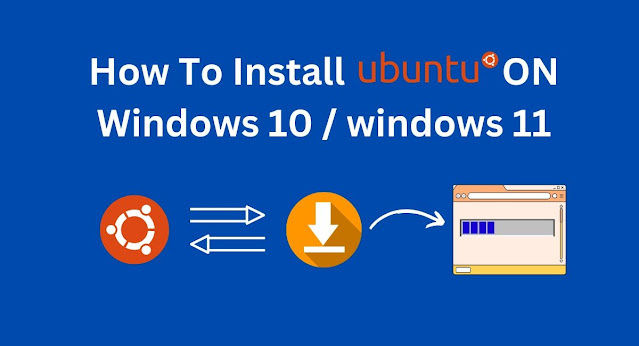OpenShift vs Rancher vs Tanzu: A Comprehensive Comparison
When it involves box orchestration and management platforms, OpenShift, Rancher, and Tanzu are most of the leading solutions in the industry. Each gives its personal set of features and talents, catering to distinct agency wishes. In this text, we’ll discover the key differences between OpenShift vs Rancher vs Tanzu, assisting you decide which platform first-rate suits your organization’s necessities.
What Are OpenShift, Rancher, and Tanzu?
Before diving into the evaluation of OpenShift vs Rancher vs Tanzu: A Comprehensive Comparison, let’s in short outline every platform:
OpenShift: Developed by means of Red Hat, OpenShift is a Kubernetes-primarily based platform designed to help computerized operations and alertness development. It gives an incorporated environment for handling bins, programs, and offerings.
Rancher: Rancher is an open-source Kubernetes control platform. It simplifies the manner of deploying and dealing with multiple Kubernetes clusters across distinctive environments, such as on-premise, cloud, and hybrid.
VMware Tanzu: VMware Tanzu is a set of products that lets businesses construct, run, and manipulate modern-day applications on Kubernetes. It integrates with VMware's environment to aid multi-cloud and hybrid cloud environments.
Now, allow’s dive into the OpenShift vs Rancher vs Tanzu evaluation in phrases of capabilities, ease of use, deployment, and different key factors.
1. Core Features and Capabilities
OpenShift: OpenShift is regularly visible as an extra opinionated platform with a whole set of developer gear, an included CI/CD pipeline, and robust safety capabilities. OpenShift affords a comprehensive improvement platform that goes beyond Kubernetes, providing developers extra tools together with supply-to-image (S2I) abilities and integrated application tracking.
Rancher: Rancher focuses more on Kubernetes cluster management. It excels at simplifying multi-cluster management, presenting an intuitive interface to deploy, screen, and upgrade clusters in distinct environments. Rancher additionally supports a number of Kubernetes distributions like RKE (Rancher Kubernetes Engine) and K3s for lightweight use instances.
Tanzu: Tanzu is deeply incorporated with VMware’s infrastructure, making it an superb desire for agencies that already depend upon VMware products. Tanzu’s strength lies in its multi-cloud assist, providing flexibility in deploying Kubernetes clusters across distinct cloud environments and on-premises information centers. It additionally consists of developer-centric features, consisting of a streamlined utility deployment process and support for microservices architectures.
Winner:
- OpenShift for a completely incorporated improvement platform.
- Rancher for multi-cluster Kubernetes management.
- Tanzu for VMware surroundings users and multi-cloud flexibility.
2. Ease of Use
OpenShift: OpenShift is understood for its robust characteristic set however may be taken into consideration as more complicated to install and manage because of its comprehensive supply. However, it’s desired through establishments wanting an all-in-one solution with robust developer assistance.
Rancher: Rancher shines in ease of use, mainly in multi-cluster and multi-cloud Kubernetes environments. Its UI is easy, making cluster deployment and management incredibly accessible for operations teams.
Tanzu: While Tanzu integrates well with present VMware environments, it could present a steeper mastering curve for those surprised with VMware’s suite. However, for users already skilled with VMware, it gives an easy Kubernetes revel in.
Winner:
Rancher for overall ease of use and simplified cluster management.
3. Deployment Options
OpenShift: OpenShift may be deployed on-premise or within the cloud and is to be had in different flavors like OpenShift Container Platform (self-managed) and OpenShift Online (managed). It additionally supports hybrid deployments.
Rancher: Rancher may be set up on a wide sort of environments, including on-premise, naked-steel, and public cloud infrastructures. It allows users to control clusters walking in distinct cloud companies below a single pane of glass.
Tanzu: Tanzu is designed for multi-cloud environments and can be deployed on-premise, in VMware’s Cloud, or in public clouds like AWS, Azure, and Google Cloud. It’s tightly coupled with VMware’s vSphere, which can be a bonus and trouble relying on the company’s infrastructure.
Winner:
Rancher for flexibility in deployment options across numerous environments.
4. Security and Compliance
OpenShift: Security is a strong fit for OpenShift, which incorporates function-based access control (RBAC), compliance certifications, and automatic security updates. OpenShift enforces strict protection policies through default, making sure bins are nicely isolated and steady.
Rancher: Rancher also offers RBAC and integrates well with third-celebration security solutions. It emphasizes Kubernetes-native protection rules, however, does no longer has as many built-in security features as OpenShift.
Tanzu: Tanzu advantages from VMware’s agency-grade protection capabilities. It provides sturdy security measures across multi-cloud environments and integrates with VMware’s protection products.
Winner:
OpenShift for advanced, integrated security and compliance.
Five. Cost
OpenShift: As an industrial imparting from Red Hat, OpenShift comes with a value, specifically in case you opt for the employer version. However, the enormous function set and assist might also justify the fee for large-scale businesses.
Rancher: Rancher is open-supply, making it the maximum cost-powerful option for agencies searching out Kubernetes cluster control without the extra charges related to proprietary software.
Tanzu: Tanzu is available through VMware’s subscription models, making it highly expensive, particularly for agencies that are not already in the usage of VMware products. The tight integration with VMware merchandise can increase charges due to the want for VMware’s infrastructure.
Winner:
Rancher for being open-supply and unfastened to use.
Conclusion
When evaluating OpenShift vs Rancher vs Tanzu, the right desire relies upon your organisation’s unique wishes and current infrastructure:
OpenShift is right for organizations searching out a totally incorporated improvement platform with a sturdy recognition of protection and developer equipment.
Rancher could be the move-to answer for multi-cluster control and ease of use in numerous environments.
Tanzu is excellently suitable for agencies already invested within the VMware environment or in search of leveraging VMware’s cloud and hybrid cloud talents.
Each platform gives its personal strengths, so choosing between OpenShift vs Rancher vs Tanzu, in the long run, relies upon your infrastructure, Kubernetes control wishes, and finances.




Comments
Post a Comment